
38 minute read
Society for Range Management Rangeland Health
RANGELAND HEALTH: Perspectives on Landscapes By Dan Harmon and Dave Voth
The Society for Range Management-Nevada Section held its annual summer meeting on July 17, 2020. Like the rest of the world we were adapting to Covid-19 concerns and the meeting was held virtually via Zoom.
We incorporated this new-world method of meeting because of our concerns for our members and the community and embraced making the best of a virtual meeting. We had already lined up a great group of presenters before the pandemic and luckily, they were more than willing to present via Zoom. While we missed the opportunity to be in the field seeing firsthand the concepts of each presentation, the expertise of the presenters and their stockpile of field photographs allowed for many realworld examples. The theme of this year’s meeting was “Rangeland Health: Perspectives on Landscapes.” The field of range management is a multifaceted discipline encompassing many aspects of land use. From a wildlife manager to a cattle operator to the recreational enthusiast, we all share common core beliefs of rangeland health, yet each of us may interpret differently to judge the health of the range on specific values. While we may have a different perspective on the landscape based on our specific working fields, we are all connected by that landscape. The first presenter was Keith Barker, fire ecologist with the Carson City District Bureau of Land Management (BLM). Keith conducts many projects in his district and his presentation was titled “Implementing Multiyear Large-Scale Rehabilitation Projects.” Keith began by describing the various ways the rangeland ecosystem undergoes detrimental large-scale changes. He discussed rapid changes that occur from a fire to gradual changes that occur from juniper invasion. He then described some of the methods he uses to address these changes. Some methods can be used proactively, like controlling juniper expansion through thinning operations or herbicide use to decrease annual grass fuels and creating firebreaks, or reactively, such as seeding efforts following wildfire. Keith discussed the recent Virginia Range project north of Reno, Nevada. Approved February 2017, the project covered approximately 190,000 acres. Its main objective was to protect habitats and infrastructure by treatments to modify fire behavior. The BLM partnered with the Natural Resource Conservation Service (NRCS), U.S. Geological Service (USGS), Nevada Division of Wildlife (NDOW), USDA Agricultural Research Service (ARS) and other groups to determine the best treatments to achieve these goals. Treatments would include juniper removal, prescribed fire, seeding, and herbicide use. As with many projects in critical habitats, the area had not yet burned in February 2017 when the project was initiated, but that would soon change. In July 2017, the Long Valley Fire burned a large portion of the project area. This changed most treatments from being proactive to reactive, but many of the tools remained the same. Because of the high density of cheatgrass pre-fire and likely increase post-fire, the use of the pre-emergent soilactive herbicide, Imazapic, was applied and fallowed for 1-year prior to seeding, in an effort to decrease cheatgrass competition and increase seeded species success. As often occurs with BLM seeding efforts in northern Nevada, introduced species like Siberian wheatgrass and ‘Immigrant’ forage kochia were limited to their use. Introduced species seed mixes were seeded as firebreaks extending a limited distance from roads, while native seed mixes covered larger areas, often upslope with hopes the increase in elevation would provide increased seeding success. This long term effort is an ongoing project and we look forward to hearing about the results in the future. Keith finished his presentation by showing some photos of a recent fire south of Carson City, the Numbers Fire. He showed how a firebreak treatment area, which had removed juniper fuels, helped stop the fire. This was a great example of proactive management being effective at stopping fires with fuel breaks. The next presenter was Dr. Jeanne Chambers, senior scientist with the USDA Forest Service. Her presentation was titled “What Makes Plant Communities Resistant to
FIGURE 1.
Brooks & Chambers et al 2016 Nonnative Plant Invasions”? Jeanne first explained what a plant specie’s fundamental niche and realized niche are and how they affect nonnative plant invasions. A species fundamental niche is determined by the environment, climate, topography and soil type. The realized niche is determined by the species composition of the existing plant community. These two, combined, can determine the likelihood of nonnative invasion. Dr. Chambers then described how our sagebrush communities exist over a wide range of environmental gradients, giving them various degrees of resistance to invasions of nonnatives such as cheatgrass (Figure 1). Wyoming big sagebrush habitats, which are at lower elevations and exhibit warmer and dryer conditions, therefore support lower densities of perennial grasses and forbs and are less resistant to cheatgrass invasion. Mountain big sagebrush sites which are higher elevation and experience cooler and wetter conditions and thus support higher densities of perennial grasses and forbs, are more resistant to cheatgrass invasion. To further simplify, higher densities of perennial grass equal greater resistance to cheatgrass invasion. This is the framework for fuel breaks that Keith Barker discussed, where the aim is to establish a high density of perennial grass to keep out cheatgrass and associated fuels that would carry a fire. Jeanne described mechanisms that perennial grasses use to resist cheatgrass invasion.
By sharing the same soil root zone as cheatgrass, the perennial grass can deplete the water and nutrient resource pool, thus limiting the establishment and growth of the annual invader. Jeanne determined through experimental and observation comparisons of perennial herbs that about 20% perennial herbaceous cover is required to resist increases in cheatgrass. She finished her presentation with a discussion of the tenuous balance between grasses, shrubs and annual invaders. If shrub density gets too high, the shrubs can outcompete the perennial grasses and decrease the cheatgrass resistance, and thus increase wildfire threats. Best grazing management practices are of critical importance to maintain a healthy, diverse balance of shrubs, perennial grasses and low annual grass cover. Postfire rehabilitation that maintains or establishes the required perennial grass cover is also of critical importance. The next presenter was Gabe Ludwig, a representative with Bayer Environmental Sciences. His presentation was titled “Rejuvra® A Newly Registered Herbicide for Annual Grass Control in Rangelands.” The active ingredient in Rejuvra, Indaziflam, is also the ingredient in EsplAnade™ 200SC, which is registered for areas that are not to be grazed. With the grazing approval for Rejuvra the opportunities for annual grass control on rangelands is greatly increased, he said. Gabe explained how the use of a pre-emergent herbicide like Rejuvra which controls the annuals while having no negative effect on established perennial plants can help to break the invasive annual grass fire cycle. Not only is the annual grass controlled but the existing perennial grasses are often “released,” increasing their vigor and period of greenness and decreasing the chance and season of wildfire. By removing the annual grasses, the soil resources and moisture they would use can now be used by perennial grasses. He noted that while previously used pre-emergent herbicides such as Imazapic provide about 1-year growing season of control, Rejuvra has been observed to provide up to 4-years growing seasons of new seedling control. This is likely to be highly variable based on the environment which the herbicide is used but provides promising longer-term control. This may provide a great management opportunity in those areas where the perennial grass cover falls just short of the 18% cover that Dr. Chambers determined is required for cheatgrass resistance. By controlling the annual grasses in those plant communities and releasing the perennial grass component, fire threats will decrease. Multi-year control can also further deplete the persistent cheatgrass seed bank which is critical for long-term cheatgrass management. As with other pre-emergent herbicides, such as Imazapic, application timing is critical and needs to occur in early fall prior to any germination events. For now, the BLM process for approved use of Rejuvra on Nevada BLM rangelands hasn’t begun, but hopefully as more benefits are demonstrated approval can proceed. Presenting next was Shannon Clark, a faculty affiliate with Colorado State University and a contractor for Bayer, Western Stewardship and Development. Her presentation was titled “Promoting Native Forb Habitat While Reducing Wildfire Risk.” Shannon first discussed the threat that annual invasive grasses pose to pollinator habitats on the Colorado Front Range. Like Gabe Ludwig’s discussion of releasing perennial grasses by controlling annual grasses, FIGURE 2.
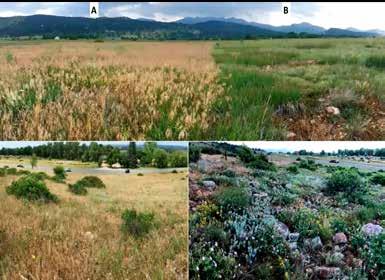
Shannon presented examples of increasing perennial forb presence by controlling annual grasses using Rejuvra (Figure 2). Shannon’s research found increases in flower production, cover percent and richness of forbs, and 2.5 times more rare species in herbicide treated vs. untreated areas, likely due to annual grasses outcompeting these forbs. Shannon discussed how increases in forb richness facilitate pollinator diversity, and how controlling annual grasses with Rejuvra® decreased the wildfire threat. At Shannon’s study area, cheatgrass litter or fuel decreased from 900 lbs./acre to less than 100 lbs./acre on herbicide treated plots. Last, Shannon gave an example of a study using Rejuvra to control annual grasses in Wyoming where a wildfire unexpectedly started during the study and burned around the study area. She showed photos where the fire was unable to burn through the herbicide treated plots, presumably from the lack of annul grass fuels and the increase in green perennial grass cover. This was another great realworld example of these treatments, like Keith Barker’s example of fire breaks being successful at controlling wildfires. Both Shannon and Keith’s examples of effective fuels management are proactive efforts, but we know fires are going to happen, so we also need effective post-fire treatments.
Our last presenter, Mark Freese with the Nevada Department of Wildlife (NDOW), focused on effective post-fire rehabilitation treatments. Mark is the Western Regional Habitat Biologist for NDOW and heads an impressive team that, in cooperation with public (BLM and Forest Service) and private landowners, seeds tens of thousands of rangeland habitat annually. His photographic records of the outcomes of these projects as they relate to different seed mixes, rates, application timings and methods is a valuable bank of knowledge. Mark began by emphasizing what Dr. Chambers and others had discussed, that deep rooted perennial bunchgrasses are the primary factor to suppress cheatgrass and decrease wildfire threats. He stressed that this narrow focus on one functional group does not limit the importance of plant community diversity or the ability to manage for plant diversity which is critical for wildlife populations. Plant diversity is most achievable when resistance to annual grass invasion and decreased wildfire threats occur, which relies on maintaining perennial grass cover. FIGURE 3 . Mark discussed how he defines a successful seeding effort, which can be subjective, based on the goals of the effort. He stated that in general, NDOW’s goal is to facilitate plant community improvements with herbicide use and seeding efforts that can further improve through passive management efforts. He described the multiple methods of seed acquisition NDOW use to purchase large quantities of seed each year and the importance of getting the seed early enough to have seeding efforts occur before the winter season (before January). Unlike the BLM they do not have the limitations of native vs. nonnative seed use. Mark explained they focus on plant functional groups and the service they provide to wildlife as opposed to focusing on specific species. Mark gave many examples of his projects with success, failures and missed opportunities
(Figure 3).
Mark discussed the concept of hedge betting seed mixes, where introduced plants such as Siberian wheatgrass and especially ‘Snowstorm’ forage kochia are added to primarily native seed mixes, so that if low precipitation or high cheatgrass competition occurs, the introduced plants can provide some degree of successful establishment. Using animal fecal pellet counts, they found magnitudes greater wildlife use where ‘Snowstorm’ forage kochia established. Mark’s take-home message was “doing nothing and limiting yourself is a choice,” but let’s take some risks and do more on the landscape using the best science and past experiences, hedge our bets and use the best timing practices to have a positive impact on the health of our rangelands. To view the full presentations
please visit Nevada.Rangelands.org.
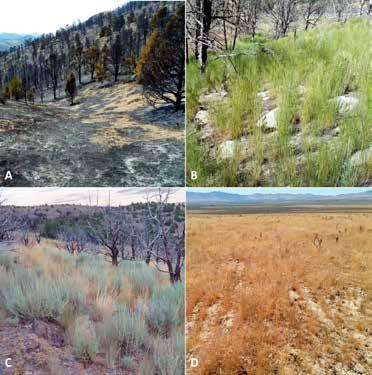
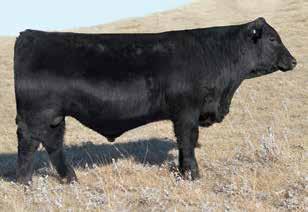
Lot 1
#+19840557
CED +5 | BW +2.3 | WW +89 | YW +144 | MK +26 CW +666 | MB +.86 | RE +.79 | Fat +.019 $M +62 | $W +91 | $F +97 | $G +64 | $B +160 | $C +270 Bryan Ratzburg: (406) 937-5858 Cell: (406) 788-3272 Ernie Ratzburg: Cell: (406) 788-3244
200 Bulls | 920 Bred Females
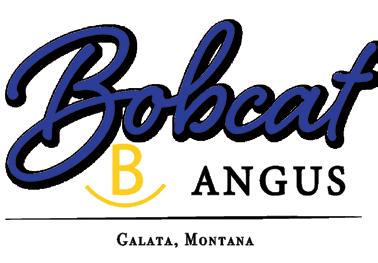
700 - Bred Heifers
(No Brands)
Lot 3 #19840577
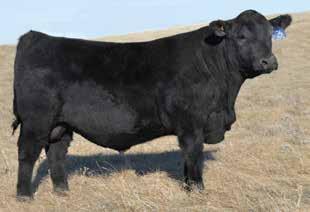
CED +2 | BW +2.0 | WW +84 | YW +135 | MK +35 CW +62 | MB +.51 | RE +1.04 | Fat +.004 $M +89 | $W +99 | $F +95 | $G +52 | $B +147 | $C +280 275 - AI Bred to Circle L Gus
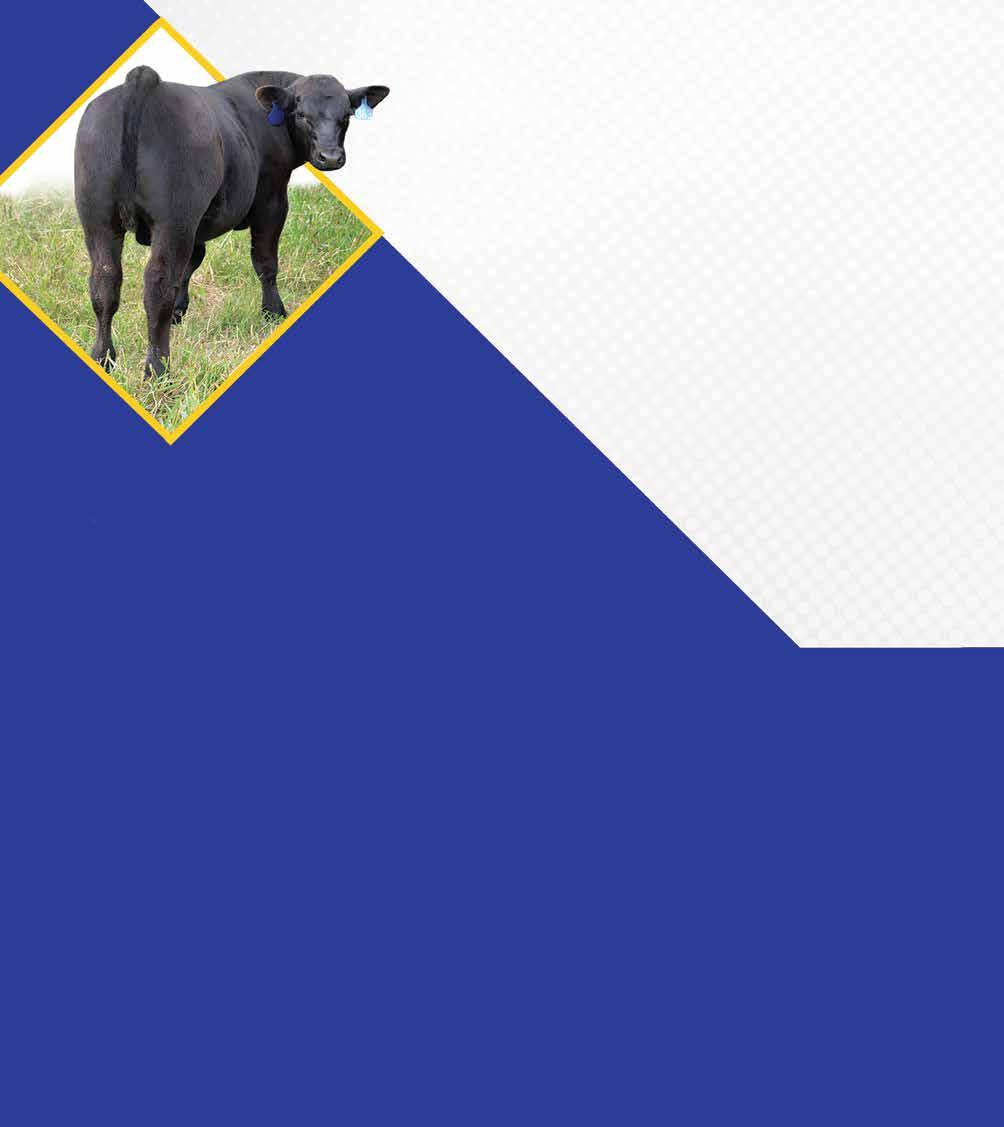
110 - AI Bred to Vermilion Spur B024
315 - Pasture Bred Heifers
Heifers are all ultrasound pregnancy checked for sex and birth date in 10 and 20 day calving groups.
150 - 2 Coming 3 Year Old Cows
Lot 9
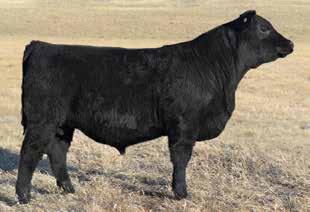
#19840507
CED +5 | BW +1.0 | WW +70 | YW +119 | MK +17 CW +65 | MB +.47 | RE +.36 | Fat +.074 | $M +88 | $W +69 | $F +115 | $G +35 | $B +151 | $C +284
Lot 22
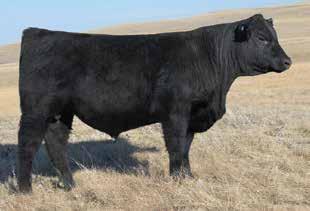
#+19853427
CED +8 | BW +.9 | WW +80 | YW +139 | MK +26 CW +56 | MB +.63 | RE 1.05 | Fat -.024 $M +64 | $W +84 | $F +93 | $G +60 | $B +153 | $C +262 30 - Registered 8 Year Old Cows
AI bred to Bobcat Blue Sky
40 - 10 Year Old Commercial Cows They start calving March 20th
Sire lineup includes: Bobcat Blue Sky (18880272), Circle L Gus (17993084), Apex Klondike (19337906, PGC Forge (19230832) , Connealy Emerald (19257149) Jindra Megahit (+17731559), SydGen Enhance (18170041), VAR Legend 5019 (18066037), Woodhill Blueprint (18876777) 16th ANNUAL Production Sale
12:30 | SATURDAY, JANUARY 30, 2021 Western Livestock Auction | Great Falls, MT www.bobcatangus.com bobcatangus@northerntel.net
By Susan Van Patten, President January is traditionally a Presently, we are in the process of planning the annual Bull time to look to the future Sale Dinner, scheduled for Friday, February 19, 2021. In and make resolutions light of the ever-changing regulatory mandates over the to improve. Personally, past nine months this could be revamped or canceled in a I am looking forward heartbeat. I am determined to resolve this at our January to the upcoming months. With all the challenges we meeting. We are continuing to support the Cattleman’s experienced during last year I hope we have learned some Update slated for January which will be held via ZOOM. valuable lessons. For me closing the book on 2020 is huge, The how of the support has yet to be determined. but I learned that incorporating God into my life daily is Last year Cowbelles entered into a collaborative effort my personal lesson learned and New Year’s Resolution. with the Churchill County Jr. Livestock Show to sponsor Cowbelles is looking to the future with hope, yet we are the end of April 2021. We are hopeful, realistic, and being realistic. We are moving forward as if all our past determined that we will move forward to accomplish our activities will transpire. Individually and as a nation we mission of “Promoting the beef and agricultural industries have overcome great setbacks, persevered in the light of in the community, schools, and youth organizations in restrictive governmental mandates, and demonstrated our Churchill County.”indomitable spirit. We had our scheduled meetings in a “New and Improved Carcass Program”, planned for September, October, and November. Unfortunately, our The youth activities we have sponsored in the past are on December meeting and Christmas Dinner were canceled the agenda for the upcoming year. As we move forward due to the COVID-19 Crisis. Flexibility has become an on these activities, we will update everyone on relevant essential component of planning for us. scholarship application information as well as the Jr. Cattleman’s Award. If readers are aware of youth activities that are in line with our mission, please contact a Cowbelles member or send an email to ChurchillCountyCowbells@gmail.com. We may be able to place the event on our Facebook page to get the word out. As a final note, I want to recognize one hardworking Churchill County youth. At the October meeting Clayton Rigney was honored as he received the Churchill County Cowbells Junior Cattleman Award. This award of $250.00 is based on a scoring rubric that has five components. Anyone who has received this award should be proud of their accomplishment. All youth 12 years of age or older residing in Churchill County and enrolled in the Youth Livestock Program are eligible. Questions? Check with a member or email us at the above address.
Beef & Mushrooms with Smashed Potatoes
INGREDIENTS
1-1/2 pounds red potatoes (about 6 medium), cut into 1-1/2-inch pieces 1 pound ground beef 1/2 pound sliced fresh mushrooms 1 medium onion, halved and sliced
3 tablespoons all-purpose flour 3/4 teaspoon pepper, divided 1/2 teaspoon salt, divided 1 can (14-1/2 ounces) beef broth 2 tablespoons butter, softened 1/2 cup half-and-half cream 1/2 cup french-fried onions

DIRECTIONS
Place potatoes in a large saucepan; add water to cover. Bring to a boil. Reduce heat to medium; cook, uncovered, until tender, 10-15 minutes. Meanwhile, in a large skillet, cook and crumble beef with mushrooms and onion over medium-high heat until no longer pink, 6-8 minutes; drain. Stir in flour, 1/2 teaspoon pepper and 1/4 teaspoon salt until blended. Gradually stir in broth; bring to a boil. Reduce heat; simmer, uncovered, until thickened, about 5 minutes, stirring occasionally. Drain potatoes; return to pan. Mash potatoes to desired consistency, adding butter, cream and the remaining salt and pepper. Spoon into bowls; top with beef mixture. Sprinkle with fried onions.
Test Kitchen Tips
If you have time, cook the mushrooms separately from the ground beef. The beef will brown a bit more and the mushroom juices will stay with the mushrooms, creating even more flavor. After returning the drained potatoes to the pan, heat them over low heat for 1-2 minutes before adding the butter and half-and-half. Any water will evaporate, leaving a richer flavor. Try this: Spoon portions into individual ramekins. Top with your favorite cheese and french-fried onions. Bake at 350° for 5-7 minutes or until the cheese is melty. Yum!
Conservation Efforts Continue on Nevada’s Farms and Ranches Amid Challenging Year
The USDA’s Natural Resources Conservation Service (NRCS) in Nevada continued its conservation work across the state despite a tough 2020 marked
with a pandemic and several natural disasters. The agency helped farmers, ranchers and forest landowners implement conservation practices on their working lands, which help conserve natural resource such as soil, water and wildlife as well as boost producers’ bottom lines. Additionally, NRCS launched new online tools that increased the efficiency, effectiveness and delivery of crucial programs. “NRCS helps people help the land in the good times and the challenging times,” said Ray Dotson, NRCS State Conservationist in Nevada. “I have heard stories from across the state, where our team often uses creative means to help producers meet their conservation and business goals. Additionally, we continued our efforts to streamline program delivery and to work with our USDA counterparts to best serve the needs of producers.”
Key highlights from 2020 include:
Conservation Delivery Amid Pandemic: NRCS continued to deliver services during the COVID-19 pandemic using social distance guidelines, phone and online tools. This year, NRCS worked with producers and communities to: • Develop more than 100,000 conservation plans nationally. • Co-invest $1.32 billion through the Environmental Quality Incentives Program (EQIP) to put conservation practices on 10 million acres, as well as $507 million through the Conservation Stewardship Program (CSP) to put conservation enhancements on 9.3 million acres. This includes 63,962 acres of EQIP and 6,003 acres of CSP in Nevada. • Enroll more than 430 new easements, totaling 230,000 acres, into the Agricultural
Conservation Easement Program (ACEP). This includes 4,100 acres in Nevada. • Enter into over 420 agreements with local sponsors to cooperatively implement emergency recovery measures through the Emergency Watershed Protection
Program (EWP) and obligated more than $251 million in EWP funds in FY 2020.
Links to the above-mentioned programs:
EQUIP: www.nrcs.usda.gov/wps/portal/nrcs/main/national/programs/financial/eqip/ CSP: www.nrcs.usda.gov/wps/portal/nrcs/main/national/programs/financial/csp/ ACEP: www.nrcs.usda.gov/wps/portal/nrcs/main/national/programs/easements/acep/ Disaster Recovery Assistance: Wildfires, hurricanes, drought and the derecho had significant impacts on agricultural operations nationwide. NRCS coordinated closely with USDA’s Farm Service Agency (FSA) to deliver disaster assistance programs. EQIP-funded conservation practices, including streambank restoration and vegetative buffers, protect land from erosion, support disaster recovery and help mitigate loss from future natural disasters. And, in some cases, EQIP funds can assist livestock producers with emergency animal mortality disposal following a natural disaster event. NRCS also partners with communities to aid disaster recovery through the EWP program. In addition to responding to 55 disasterrelated watershed emergencies, EWP projects were also completed that addressed issues of unique, local significance, including protection of properties in historically underserved Alaskan communities and projects that preserved critical infrastructure in rural Iowa counties. Soil Health: NRCS continued to prioritize adoption of soil health management systems. In fiscal 2020, NRCS provided financial assistance to help producers plan to plant cover crops on 18 million acres and to use no-till on 7.3 million acres. Additionally, NRCS rolled out a new Soil Health Toolbox, which offered useful tools to demonstrate how soil functions and to help guide management decisions that will improve soil health with NRCS conservation practices. Water Quality: NRCS continued its investments in targeted water quality initiatives, which increase the return on investment in terms of improving water quality in priority waterways. NRCS will continue its work through the National Water Quality Initiative and Mississippi River Basin Healthy Watersheds Initiative in 379 priority watersheds for fiscal year 2021. Wildlife Habitat: Farmers and ranchers across the country have continued their work on managing for habitat on working lands. From the sagebrush sea in the West to the longleaf pine forests of the South, producers are making a difference for wildlife. NRCS continues to plan for future wildlife conservation, and this year rolled out a new five-year Working Lands for Wildlife conservation strategy for the gopher tortoise, the keystone species of longleaf pine forests in the Southeast. In Nevada, two Sage Grouse Initiative contracts for 1,638 acres were completed, as we continue work in sage grouse habitat areas. Online Tools and Resources: NRCS and the Farm Production and Conservation (FPAC) Business Center rolled out a new decision tool this year for producers on farmers.gov. The Conservation Concerns Tool enables landowners to learn about conservation concerns that might impact their agricultural operations, then search for solutions targeted to fit their business needs. Producers can also find a new video series, called Conservation at Work, that spotlights how producers are using key conservation practices. In addition to finding information, producers can also log into farmers.gov to manage their conservation business online. During the past year, key functions from NRCS’s Conservation Client Gateway were moved to the farmers.gov portal to provide one place where producers can manage all their USDA business online.
CONSERVATION CONCERNS TOOL: www.farmers.gov/conserve/tool VIDEOS: www.farmers.gov/conserve/conservation-at-work YOUR ACCOUNT: www.farmers.gov/sign-in
NRCS works on public land? You bet! Teri Knight, NRCS district conservationist (L), discusses the installation of a solar pumping plant with producers/BLM permittees Greg and Ken Newby, and Cameron Boyce (R), assistant field manager for BLM Nevada on the Newbys BLM allotment.
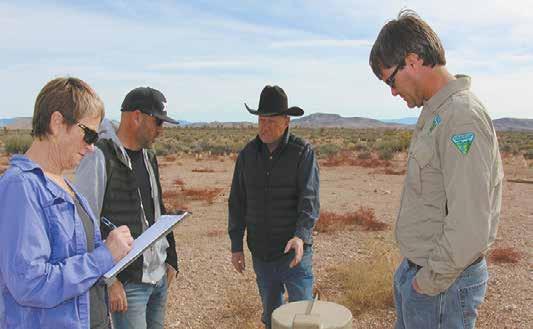

Amy Coney Barrett: A Win for Landowners By Katherine E. Merck | Falen Law Offices, LLC
With the passing of Justice Ruth Bader Ginsburg, President Trump has the opportunity to flip one of
the most liberal Supreme Court seats in history. Each time a new associate justice joins the Supreme Court, the balance of our nation’s highest court shifts. With the recent nomination of Judge Amy Coney Barrett, special interest groups are eager to examine her decisions and writings to predict where she might stand on major issues like healthcare and abortion. However, what is often far more consequential to landowners and agricultural producers is how Barrett’s confirmation could impact environmental rulings. Unlike Justice Brett Kavanaugh, the most recent addition to the bench, Barrett does not have an extensive history in environmental and administrative law cases. The environmental cases she has been a part of indicate that she may make it more difficult for environmental groups to bring lawsuits in federal court. In 2000, the Supreme Court vastly expanded the ability of citizens to sue based in environmental lawsuits. The late Ruth Bader Ginsburg, writing for the majority, stated that a plaintiff did not need to prove actual harm to an individual to have standing to sue in federal court. Barrett, who currently serves on the 7th U.S. Circuit Court of Appeals, penned the opinion in a similar case but held that a citizen must be able to demonstrate actual and particularized harm (harm to the individual) in order to bring an environmental lawsuit in federal court. What this means is that a citizen cannot bring a lawsuit in federal court merely as a “concerned bystander” seeking to protect the environment. Put simply, “injury to the environment” is not injury to a particular person, which makes it significantly harder for environmental groups to bring federal lawsuits. This is important because many environmental lawsuits originate from individuals who do not even live in the area effected. In 2018, Barrett reversed an earlier ruling that found 13 acres of Illinois wetlands fell under the protection of the Clean Water Act. This ruling is seen as a victory against government overreach in favor of landowners and may indicate that Barrett is wary of agency overreach. Additionally, Judge Barrett has written articles in favor of courts breaking with bad precedence. This could go a long way in curtailing issues of government deference and the natural corruption such deference creates. Barrett is known as an “originalist,” which means she believes that the Constitution should be applied as written. This judicial theory may indicate that Barrett will favor limiting agencies to operating within strict interpretations of regulations, a change from the current deferential approach taken by the court. Barrett being confirmed may place Justice Kavanaugh in the position of swing vote. Kavanaugh has historically been an outspoken critic of allowing agencies to interpret and enact statutes when Congress has not provided clarity in a specific area, known as Chevron deference. The late Justice Antonin Scalia, whom Barrett clerked for in 1999, similarly favored reining in agencies. If Barrett follows in her mentor’s footsteps, her appointment would be a major win for landowners and agricultural interests. There are several significant environmental cases that may be heard by the Supreme Court in the next few years, including the validity of several important Trump regulations trying to curtail radical environmental regulations. Thus, Barrett’s take on environmental policy may have a dramatic impact on the shape of environmental law moving forward. While it is impossible to predict how a justice might rule on any given case, Barrett’s views in the environmental realm could go a long way in reining in the governmental overreach that has become prevalent over the past several decades.
Katherine E. Merck is an Associate Attorney with Falen Law Offices, LLC with a primary focus on property rights, environmental, and natural resources law. Falen Law Offices, LLC, has attorneys licensed to practice law in Colorado, Idaho, Illinois, Montana, Nebraska, New Mexico, North Dakota, South Dakota, and Wyoming. This article should not be understood to state or imply that any lawyers of this law firm are certified as specialists in a particular field of law. Colorado does not certify lawyers as specialists in any field. The Wyoming State Bar does not certify any lawyer as a specialist or expert. Anyone considering a lawyer should independently investigate the lawyer's credentials and ability, and not rely upon advertisements or self-proclaimed expertise. This article is informational and is not legal advice. Use of this article or contact with this law firm does not create an attorney-client relationship.
Partnerships and Innovation: The Regional Conservation Partnership Program (RCPP) and Conservation Innovation Grants (CIG) Program continued to rally partners to help increase the reach of conservation and support the development of new tools, approaches, practices and technologies to further natural resource conservation on private lands. NRCS just closed the application period for RCPP, with plans to invest $360 million nationally in projects that improve the nation’s water quality, combat drought, enhance soil health, support wildlife habitat and protect agricultural viability. Additionally, NRCS invested $50 million nationally in 10 conservation projects through RCPP Alternative Funding Arrangements, where partners are given the liberty to manage projects and the associated relationships with producers and landowners directly. In October 2020, NRCS awarded more than $14.6 million in grants to 24 CIG projects nationally. This USDA investment has generated more than $15.3 million in partner matching funds, resulting in almost $30 million for conservation innovation nationally. Authorized in the 2002 Farm Bill, the CIG Program has awarded nearly $300 million to date. In Nevada, the RCPP project with Duck Valley Indian Reservation working with their partners, including the Duck Valley Conservation District, tribal wildlife and parks, the business council, and the water board, concluded with great success. (Watch Video: https://youtu.be/opJ3VY-IE9g) The reservation saw the completion of a more efficient irrigation system, including installation of 25 nose pumps to provide frost-free winter water for livestock, and solar livestock watering systems in areas where the water table is greater than 25 feet that includes water wells with solar pumps, troughs, and pipelines. Several of the main diversion structures are now automated, allowing water delivery to be controlled from a computer, and submerged orifices were installed to effectively measure water throughout the reservation. 2018 Farm Bill Implementation: NRCS made tremendous strides in implementing the 2018 Farm Bill in the past year. NRCS published final rules for EQIP and CSP this fall and is preparing to publish final rules for ACEP and RCPP. Additionally, NRCS completed and published updates to its set of National Conservation Practice Standards, which includes 58 standards. (www.nrcs.usda.gov/wps/portal/nrcs/detail/ national/newsroom/releases/?cid=NRCSEPRD1692218) The 2018 Farm Bill required review all 169 of its national conservation practices to seek opportunities to increase flexibility and incorporate new technologies. NRCS is a part of the Farm Production and Conservation (FPAC) mission area at USDA. Other 2020 highlights can be found here: www.nrcs.usda.gov/wps/portal/ nrcs/detail/national/newsroom/releases/?cid=NRCSEPRD1717843 All USDA Service Centers are open for business, including those that restrict inperson visits or require appointments. All Service Center visitors wishing to conduct business with FSA, NRCS or any other Service Center agency should call ahead and schedule an appointment. Service Centers that are open for appointments will prescreen visitors based on health concerns or recent travel, and visitors must adhere to social distancing guidelines. Visitors are also required to wear a face covering during their appointment. Our program delivery staff will continue to work with our producers by phone, email and using online tools. More information can be found at farmers.gov/coronavirus.
Updates From Public Lands Council Leadership & Staff

THE PRESIDENT'S PUBLICATION
As 2020 comes to a close, many of us reflect on the
strange year we’ll now put behind us. Between fires and droughts, global pandemics and travel restrictions, this year has given many of us cause to reassess many of our priorities and figure out what truly matters to each of us. This Christmas season like all those that came before it will be filled with joy, and I hope a little optimism is also under those Christmas trees. While 2021 is sure to bring its share of challenges, we will at least be able to confront them in person. I look forward to return to meeting in person, sitting across the table from all of you and from the folks coming into the Biden administration. We know there are challenges ahead, so we’re focusing on finding common ground and being “at the table” rather than being “on the menu”. A lot will happen between now and inauguration day, and PLC leadership and staff will be there at the table to represent each of you until we’re able to make the annual trek to Washington, D.C. ourselves. From our homes to yours, wishing you a very Merry Christmas and Happy New Year.
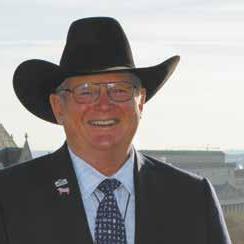
Niels Hansen
Presidentr Public Lands Council
FROM THE DESK OF THE EXECUTIVE DIRECTOR
There are two kinds of people: those who have all their Christmas gifts purchased, wrapped, and under the tree by December 1, and those who are still madly shopping for that one last bauble at 4:59 on December 24.
Normally, I’m in that first category, but 2020 had a way of throwing a wrench into things and turning me into an 11th-hour shopper. The federal government also found themselves in that category, having entered December laden with quite a long regulatory to-do list. As you’ll see in the Policy Update section below, the U.S. Fish and Wildlife Service, Department of the Interior, and U.S Forest Service had a busy week publishing several draft and final rules in the Federal Register. Midnight regulations – those finalized by the agencies between election day and inauguration day – aren’t always welcome additions to federal authorities, but the regulations finalized this month are welcome news to livestock producers who have been working toward these goals for 4 years. We see clearer direction in the Endangered Species Act and closure to a regulatory process that saw significant investment from all of you. While many of these Christmas deliveries bring an end to certain regulatory processes, others are just beginning. While we’ll take a few days off to enjoy the holiday cheer, work will resume on proposed regulations that require our feedback and guidance. Comments are in development on the Forest Service’s grazing handbook and directives revisions and the BLM continues their slow march toward revision of their grazing regulations. With the new year comes the swearing-in of new members of Congress, who will be hearing from PLC as soon as the closing lines of their oaths are spoken. As we head toward January 20, conversations are ongoing with the transition team to lay the groundwork for PLC to continue to be engaged with the next administration. Each year, December brings gifts that keep on giving. 2020 is no different, other than that many of those gifts will be unwrapped over Zoom. While I expect many meetings next spring will continue to be virtual, we are committed to getting everyone back together just as soon as we can. From Washington state to Washington, D.C., Alexandria to Arizona, sending you the warmest wishes for a wonderful Christmas and Happy New Year. Thank you for spending your year following along with PLC as we learned to navigate this virtual world. The public lands grazing community is richer for your involvement and investment. Merry Christmas.
Kaitlynn Glover
Executive Director Public Lands Council Office direct: 202-879-9128 Cell: 202-525-0789 Email: kglover@beef.org MEMBERSHIP MESSAGE Twelve months ago I never thought we would be where we are now. But, heck we made it! I’m extremely thankful for our team whether it was our interns this year or Kaitlynn, our Executive Director. Throughout these past 10 months, we all came together as a team and were able to roll with the punches. This year has proven one thing – we have a strong team. Hope you all have a very Merry Christmas and happy New Year!
Allie Nelson, Director of Operations 202-879-9135 | cell: 406-231-3328 | anelson@beef.org
POLICY UPDATES
USFWS Finalizes Endangered Species Act Critical Habitat Proposed Rule
The U.S. Fish and Wildlife Service (USFWS) released text of a final rule to amend section 4 of the Endangered Species Act (ESA) related to the agency’s parameters in establishing critical habitat for protected species. The final rule follows the draft rule released in September. public-inspection.federalregister.gov/2020-28033.pdf While the rule considers a wide variety of factors related to the process of designating critical habitat, it most notably provides the ability for the agency to consider excluding federal lands during the designation. While the USFWS notes they did receive both support and opposition for this component of the rulemaking, the Service did clarify their ability to consider the “extent to which consultation would produce an outcome that has economic or other impacts, such as by requiring project modifications and additional conservation measures by the Federal agency or other affected parties, on a case-by-case basis”. In essence, the Service seeks the ability to apply the same standard on public lands that they use on private land during the designation process, and evaluate each of the potential excluded areas based on their individual attributes. Text of the rule begins on page 43 of this pdf: public-inspection.federalregister.gov/2020-28033.pdf
On December 15th, the U.S. Food and Drug Administration, Center for Veterinary Medicine (FDA, CVM) published the 2019 Summary Report on Antimicrobials Sold or Distributed for Use in FoodProducing Animals. Section 105 of the Animal Drug User Fee Amendments of 2008 (ADUFA 105) requires that animal drug companies annually report to FDA the amount of antimicrobial drugs that they sell or distribute for use in food-producing animals. ADUFA 105 also requires FDA to issue annual summary reports of the sales and distribution data. The 2019 summary report shows that the domestic sales and distribution of medically important antimicrobial drugs approved for use in food-producing animals increased by 3% between 2018 and 2019. While sales data does not necessarily reflect actual use of antimicrobial drugs, sales volume observed over time can serve as an indicator of market changes
related to antimicrobial drug products intended for foodproducing animals. At the same time, when evaluating the progress of ongoing efforts to support judicious use of antimicrobials, it is important to take into account additional information sources including actual use data, animal demographics, animal health data, and data on resistance. The complete 2019 FDA Summary Report on Antimicrobials Sold or Distributed for Use in FoodProducing Animals can be found at the link www.fda. gov/media/144427/download and updated frequently asked questions can be found at this link: https://www. fda.gov/industry/animal-drug-user-fee-act-adufa/ questions-and-answers-summary-report-antimicrobialssold-or-distributed-use-food-producing-animals
Final Habitat Definition(s) Under Endangered Species Act
U.S. Fish and Wildlife Service (USFWS), in coordination with the National Marine Fisheries Service (NMFS), published the text of the final rule to define “habitat” under the ESA. (public-inspection.federalregister. gov/2020-27693.pdf ) The final rule follows the issuance of a proposed rule, published in August, which provided two potential definitions (detailed in the previous affiliate update below). NCBA provided comment on the proposed definitions of the term. The final rule defines “habitat” as follows: "For the purposes of designating critical habitat only, habitat is the abiotic and biotic setting that currently or periodically contains the resources and conditions necessary to support one or more life processes of a species." This definition differs greatly from either of the proposed definitions offered in the proposed rule, but does reflect feedback we offered in our comments. In the comments PLC submitted on the proposed rule earlier this year, we emphasized the need to make clear that simply defining “habitat” did not inherently expand the regulatory capacity or jurisdiction of the USFWS or the NMFS, nor should the process of defining “habitat” be perceived as having any effect on the process by which the agencies designate critical habitat.
MEETING RECAPS
Four Wyoming Landowners Receive Recognition From WGFD
During the Access Recognition Program at the Wyoming Stock Growers Association’s Winter Roundup Convention and Trade Show on Dec. 9 in Casper, four landowners from across the state were recognized by the Wyoming Game and Fish Department (WGFD) for allowing public access on their lands. · The Burnt Ranch, owned and operated by Rob and
Martha Hellyer and Jim and Timmery Hellyer, is the award recipient from the northwest quadrant. · The recipient from the northeast quadrant of the state is Miles Land and Livestock, located south of Casper and owned and operated by the Jim, Peg and Casey
Price family. · Heward 7E Ranch, owned and operated by the Todd and Malia Heward family, is the award recipient for the southeast quadrant. · In the southwest quadrant, all seven of the families who came together in 2002 to establish what is now called the Chimney Butte HMA have been recognized. More information on these award recipients can be found here: www.wylr.net/2020/12/13/accessyes-awards-fourwyoming-landowners-receive-recognition-from-wgfd/
Nebraska Cattlemen Foundation Honors Industry Professionals, Donors
During the 2020 Nebraska Cattlemen Annual Business Meeting, the Nebraska Cattlemen Foundation (NCF) recognized three industry professionals and contributors virtually. · The Nebraska Range & Conservation Endowment award honors those professors or instructors that are providing cutting edge research and/or student instruction in a range management and conservationrelated area. This year the Foundation presented this $4,000 grant to Dr. Dirac Twidwell, Associate Professor and Rangeland Ecologist at the University of Nebraska. · The Nebraska Beef Industry Endowment award honors those professors or instructors that are providing cutting edge research and/or student instruction in a beef industry related area. For 2020, the Foundation awarded this $4,000 grant to Mark Goes. Mark is
Professor of Agriculture Business & Management
Technology at the Southeast Community College (SECC) in Beatrice. · The Friend of the Foundation award is presented annually to a person and/or business that has shared endless amounts of time, talent and/or treasure with the
Nebraska Cattlemen Foundation. The 2020 recipients are Bill and Barb Rishel. Bill and Barb have spent their lifetime committed to the efforts of improving the beef cattle industry. Their passion has been beef cattle genetics and Rishel Angus genetics have played a dominate role in beef industry worldwide. More information on these recipients is available here: https://krvn.com/agricultural/nebraska-cattlemenfoundation-honors-industry-professionals-donors/
Wyoming Women Recognized
From ranchers and rodeo competitors, to business executives and entertainers, there is no doubt the agriculture industry is seeing a rise in a powerhouse of women who are influencing the industry in big ways. To honor these women, and as part of their mission to promote and empower females in the industry, COWGIRL Magazine began a recognition program at the beginning of 2020 to spotlight individuals who are building a future through their passion for the western lifestyle. On Nov. 30, the publication announced the 2021 lineup for COWGIRL Magazine’s 30 Under 30, which includes three women from Wyoming. These women include: · Bryce Albright · Katherine Merck · Sarah Armstrong Learn more about these women and their influence on the industry here: https://www.wylr.net/2020/12/13/ wyoming-women-recognized/ LEOPOLD CONSERVATION AWARD Nominations and applications are now being accepted for the 2021 South Dakota Leopold Conservation Award, the organization announced Monday. The $10,000 award honors ranchers, farmers and forestland owners who go above and beyond in their management of soil health, water quality and wildlife habitat on working land. Nominations may be submitted on behalf of a landowner, or landowners may nominate themselves. The application can be found at sandcountyfoundation.org/ApplyLCA. The application deadline is March 5, 2021. Applications can be emailed to award@sandcountyfoundation.org. If mailed, applications must be postmarked by March 5 and mailed to: Leopold Conservation Award, c/o South Dakota Cattlemen’s Association, 116 N. Euclid, Suite C, Pierre, SD 57501.
LENDING A HAND First generation farmer and producers can have a difficult time getting their foot in the door and starting out. The National Young Farmers Coalition, born in 2010, is working to help these first generation producers get established and fighting on their behalf. The coalition goes back to first-generation farmer Lindsey Lusher Shute, who farms with her husband, Benjamin, in New York's Hudson Valley. They believed young farmers and ranchers needed a coordinated voice in Washington, D.C. Today, the Coalition has more than 200,000 supporters across the country, with 46 farmer-led chapters in 27 states. For more on this story, visit: www.dtnpf. com/agriculture/web/ag/livestock/article/2020/12/14/ first-generation-ranchers-look-ways
RETURN OF A LEGEND Growing up in certain families, it’s not uncommon to hear stories of an old family business subsequently lost to history. When Alex Chatham was a child, he heard a story like this about a company bearing the family name that made long-lasting wool blankets that traveled the world. An industrial designer by trade, Chatham recently set out on a bold project: after many years of dormancy, he was going to revive the manufacture of Chatham Blankets. When it comes to Chatham Blankets and the Chatham Manufacturing Company, that narrative of industrialization is front and center. Alexander Chatham founded the company, and its first mill became operational in 1877. Based in Elkin, North Carolina, the Chatham Manufacturing Company was a prominent local employer for decades, and Chatham Blankets were sold around the country. They proudly helped keep soldiers warm during World War I and World War II. The company left family ownership in 1988 and ceased to exist shortly thereafter, which meant the end of the mill in North Carolina that had employed so many people over the years. Alex Chatham’s plans for the rebirth of Chatham Blankets don’t stop at the model he’s relaunching the business with so if things go according to plan, the relaunch could be part of an even bigger moment for American industry. Read more about Chatham Blankets and Alex Chatham's plan to revive the legacy here: https://www.insidehook. com/article/gear/meet-the-man-reviving-an-iconicwool-blanket-chatham








